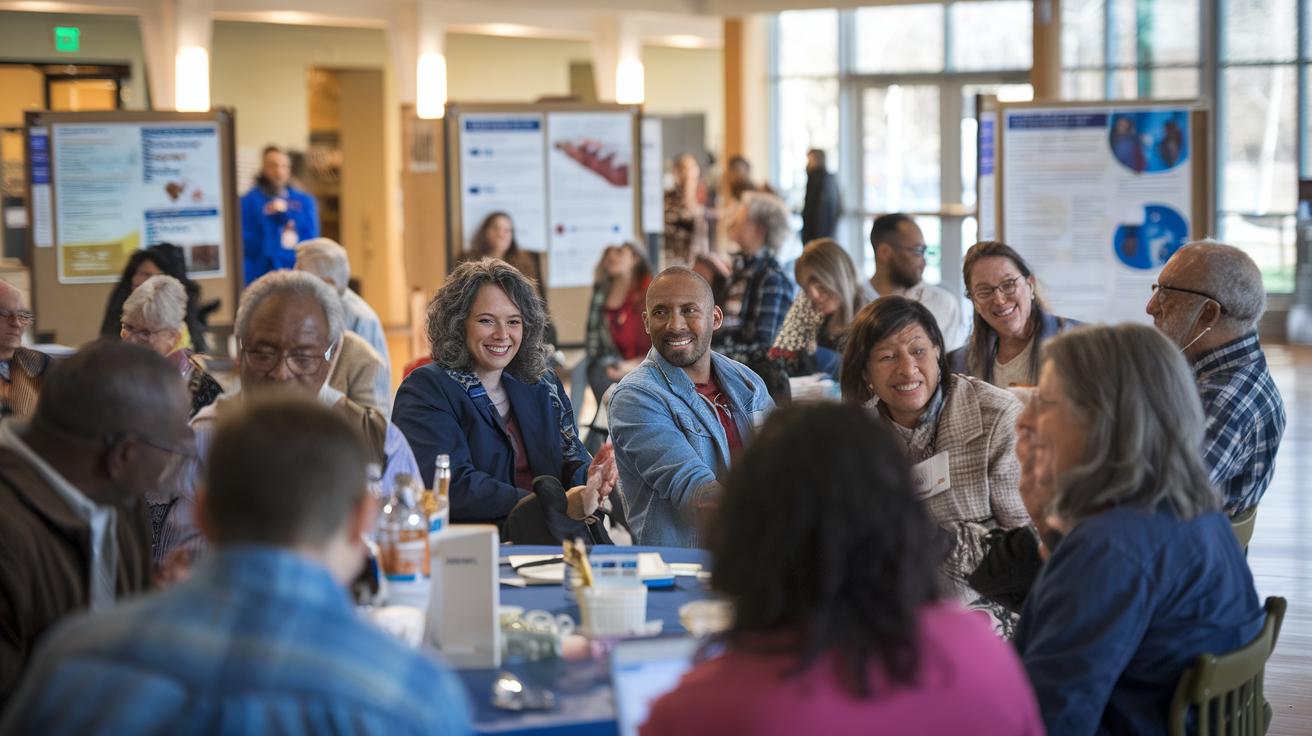Did vaccines reshape the landscape of modern medicine more than we realize, or have their impacts been understated? In the face of global health challenges, vaccines have proven to be indispensable tools, with some achieving over 90% efficacy in eradicating diseases such as smallpox and significantly reducing polio and measles cases. This article delves into the paramount lessons learned from vaccines, highlighting their unparalleled effectiveness in disease prevention, the advancements in vaccine technology like mRNA, and the steadfast trust established through rigorous safety measures. These insights underscore the importance of vaccines in shaping public health strategies and improving life expectancy worldwide.
Vaccine Effectiveness and Disease Prevention

Vaccines have long been a cornerstone in the fight against infectious diseases, demonstrating remarkable success throughout history. The eradication of smallpox stands as a testament to the power of vaccination programs, with the last naturally occurring case reported in 1977. This achievement saved millions of lives and showcased the potential for vaccines to entirely eliminate diseases. Furthermore, widespread immunization efforts have led to a dramatic reduction in cases of polio and measles, diseases that once caused widespread illness and mortality. These historical successes underscore the critical role vaccines play in disease prevention, providing both individual protection and population-level immunity.
- Smallpox: Eradicated through global vaccination efforts.
- Polio: Cases reduced by over 99% worldwide.
- Measles: Significant decline in global incidence.
- Rubella: Near elimination in many regions.
- Hepatitis B: Reduced transmission through vaccination.
In the context of pandemics, vaccines continue to be indispensable tools for controlling disease spread. The rapid development and deployment of COVID-19 vaccines exemplify the modern capacity to respond swiftly to emerging threats. With mRNA technology facilitating quicker production and adaptability to virus mutations, these vaccines have significantly curtailed the impact of the pandemic. As the world faces potential future outbreaks, the lessons learned from COVID-19 emphasize the necessity of robust vaccination infrastructure and international cooperation in health strategies.
Advancements in Vaccine Technology: mRNA and Beyond

The advent of mRNA technology marks a pivotal moment in the evolution of vaccine development. Unlike traditional vaccines, which often rely on weakened or inactivated viruses, mRNA vaccines utilize a novel approach that involves introducing a synthetic genetic sequence. This sequence instructs cells to produce a protein that triggers an immune response, thereby equipping the body to fight the virus. This method not only accelerates the production process but also enhances adaptability to emerging virus strains, as demonstrated with the COVID-19 vaccines.
mRNA Vaccines: A New Era in Immunization
mRNA vaccines operate by delivering a coded message to cells, directing them to produce a harmless piece of the virus, typically a spike protein. This protein fragment then prompts the immune system to mount a response, training the body to recognize and combat the actual virus if encountered. The rapidity with which these vaccines can be developed is unparalleled; once the genetic sequence of a virus is known, mRNA vaccines can be designed and manufactured swiftly. This capability was crucial during the COVID-19 pandemic, allowing for the rapid deployment of vaccines that have proven to be highly effective.
Beyond mRNA, other cutting-edge technologies are reshaping the landscape of vaccine development. Nanoparticle vaccines, DNA vaccines, and viral vector vaccines are among the innovations under investigation. These technologies aim to improve antigen stability, enhance immune responses, and provide long-lasting protection.
|Technology |Advantage |
|——————|————————————|
|mRNA |Rapid development and adaptability |
|Nanoparticle |Enhanced antigen stability |
|Viral Vector |Strong and long-lasting immune response|
These advancements underscore the dynamic nature of vaccine research, with ongoing studies focused on refining formulations and expanding the range of diseases that vaccines can address. The integration of new technologies continues to push the boundaries of what is possible, promising even more effective vaccines in the future.
Vaccine Safety and Public Confidence

Vaccine safety is ensured through a meticulous testing process that spans multiple phases of clinical trials. These trials are designed to evaluate both the efficacy and safety of vaccines, ensuring that any potential side effects are identified and understood. Following approval, vaccines undergo post-marketing surveillance, a critical phase where adverse events are monitored in the broader population. This ongoing vigilance is vital in maintaining public trust, as it continually reassures the public that vaccines meet stringent safety standards.
Misinformation about vaccines remains a significant challenge to public perception. Questions like, "Do vaccines cause autism?" can be addressed with a high precision answer: No, vaccines do not cause autism. Extensive scientific research has debunked this myth, yet it persists in some circles, fueled by misinformation. Such myths contribute to vaccine hesitancy, undermining efforts to achieve widespread immunization. The spread of false information can lead to reduced vaccination rates, posing a risk to public health by allowing preventable diseases to resurface.
Transparent communication and education are paramount in building vaccine confidence. Clear, factual information from trusted sources helps counteract misinformation. Health authorities and professionals play a pivotal role in disseminating accurate data, emphasizing the benefits and safety of vaccines. Educating the public about how vaccines work and the rigorous processes they undergo before approval can demystify vaccines, fostering trust and encouraging higher vaccination uptake.
The Global Impact of Vaccination Programs

Vaccination programs have profoundly transformed global health landscapes by significantly increasing life expectancy and reducing child mortality rates. These initiatives are among the most cost-effective public health interventions, leading to substantial savings in healthcare costs and preventing millions of deaths annually. Vaccines have successfully curtailed the spread of infectious diseases, contributing to healthier populations and alleviating the burden on healthcare systems. For example, widespread polio vaccination campaigns have brought the world to the brink of eradicating the disease, highlighting the profound health benefits derived from systematic immunization efforts.
- Reduced Healthcare Costs: Vaccination prevents costly disease outbreaks, saving billions in medical expenses.
- Increased Economic Productivity: Healthier populations contribute to economic growth by reducing absenteeism and increasing workforce efficiency.
- Enhanced Quality of Life: Preventing debilitating diseases improves overall life quality, allowing individuals to live healthier, longer lives.
- Strengthened Public Health Infrastructure: Vaccination programs necessitate robust health systems, improving health service delivery and preparedness for future health challenges.
The significance of vaccination programs in improving global health outcomes and reducing health disparities cannot be overstated. By providing equitable access to vaccines, these programs help bridge health gaps between different socio-economic groups, enabling all communities to benefit from the advancements in disease prevention. This equitable distribution is crucial for fostering global health security, ensuring that all populations, regardless of geographic or economic status, are protected against preventable diseases. Such widespread immunization efforts not only improve individual health but also fortify community resilience against potential health threats, paving the way for a healthier global society.
Overcoming Vaccine Hesitancy and Misinformation

Vaccine hesitancy presents a multifaceted challenge deeply rooted in cultural, social, and political contexts. Factors contributing to this phenomenon include distrust in governmental and health institutions, influenced by historical injustices in medical practices, as well as religious or philosophical beliefs that contradict vaccination. Moreover, geographical disparities in healthcare access can exacerbate hesitancy, particularly in remote or underserved communities. Addressing these concerns requires understanding the complex interplay of these elements and tailoring interventions to specific populations.
Combating Misinformation: Strategies for Success
To effectively counter misinformation, strategic health communication and education are paramount. One successful approach utilizes social media platforms, where misinformation often proliferates, to disseminate accurate information swiftly and engage with communities directly. Public health organizations can craft digestible content, including infographics and videos, that clarify vaccine benefits and safety.
Engaging community leaders serves as another pivotal strategy. Trusted figures, such as local religious or cultural leaders, can wield significant influence, encouraging vaccination through endorsement and personal testimony. Their involvement helps bridge the gap between medical authorities and communities, fostering trust and acceptance.
Promoting scientific literacy is crucial for empowering individuals to critically evaluate health information. Educational initiatives that improve understanding of scientific research processes and vaccine development can demystify medical jargon and counteract false narratives. This empowerment enables individuals to make informed health decisions.
Successful public health initiatives have demonstrated the power of community involvement and education in improving vaccination rates. For instance, campaigns that integrate culturally relevant messaging and leverage local languages have achieved higher engagement levels. Partnerships with grassroots organizations have proven effective in reaching marginalized groups, ensuring that messages resonate with diverse audiences.
- Relatable Messaging: Tailoring content to reflect cultural values and beliefs enhances community acceptance.
- Transparent Communication: Providing clear and factual information builds trust and counters misinformation.
- Collaborative Efforts: Engaging local organizations and leaders amplifies the reach and impact of health campaigns.
Final Words
The exploration of vaccine effectiveness, from historical successes in disease eradication to contemporary advancements in mRNA technology, highlights their critical role in public health. Vaccines have demonstrated over 90% efficacy in clinical trials, leading to significant reductions in diseases like polio and measles.
This article delved into the global impact of vaccination programs and addressed challenges such as vaccine hesitancy and misinformation.
The 10 things we learned from vaccines underscore their importance in preventing pandemics and improving health outcomes worldwide. Continued efforts in research, safety assurance, and public education remain vital in fostering global confidence in vaccines for a healthier future.
FAQ
What role do vaccines play in disease prevention?
Vaccines have proven highly effective in preventing infectious diseases. They have shown over 90% efficacy in clinical trials, significantly reducing disease incidence and eradicating diseases such as smallpox while reducing polio and measles cases.
How do mRNA vaccines contribute to immunization?
mRNA vaccines, like those for COVID-19, represent a technological milestone, allowing rapid adaptation to new virus strains. Their development accelerates vaccine production, improves efficacy, and enhances the response speed to emerging diseases.
How is vaccine safety ensured?
Vaccine safety undergoes rigorous testing through multiple clinical trial phases and ongoing post-marketing surveillance. This ensures side effects are rare and typically mild, maintaining high safety standards.
What factors affect public confidence in vaccines?
Public confidence can be affected by myths and misinformation. Transparent communication and education are vital in fostering trust in vaccines and overcoming skepticism related to safety and efficacy.
How do vaccination programs impact global health?
Vaccination programs significantly improve global health by increasing life expectancy, reducing child mortality, and offering one of the most cost-effective public health interventions. They save millions of lives and reduce healthcare costs.
How can vaccine hesitancy be addressed?
Vaccine hesitancy, driven by cultural, social, and political factors, can be addressed through targeted education, effective health communication strategies, and community engagement to promote scientific literacy and increase vaccine acceptance.


